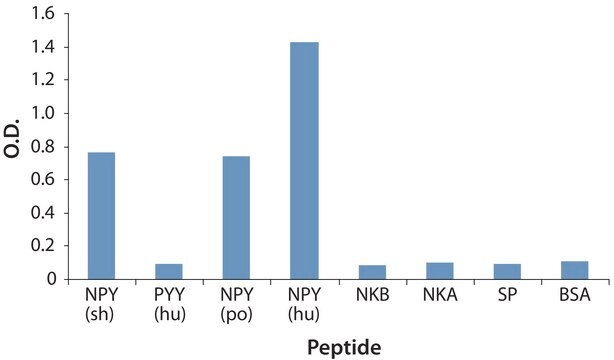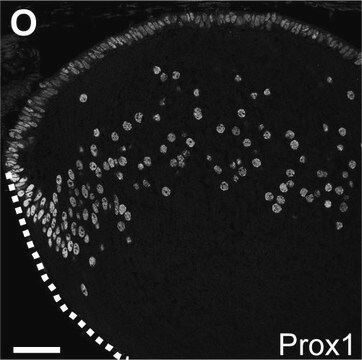AB1583
Anti-Neuropeptide Y Antibody
serum, Chemicon®
Sinónimos:
NPY
About This Item
Productos recomendados
origen biológico
sheep
Nivel de calidad
forma del anticuerpo
serum
tipo de anticuerpo
primary antibodies
clon
polyclonal
reactividad de especies
invertebrates, rabbit, guinea pig
fabricante / nombre comercial
Chemicon®
técnicas
immunohistochemistry: suitable
radioimmunoassay: suitable
Nº de acceso NCBI
Nº de acceso UniProt
Condiciones de envío
wet ice
modificación del objetivo postraduccional
unmodified
Información sobre el gen
rabbit ... Npy(100301542)
Especificidad
Synthetic NPY completely abolishes radio labeled NPY binding to NPY antibody in RIA and antibody binding to tissue antigen.
Inmunógeno
Aplicación
RIA
Optimal working dilutions must be determined by the end user.
Neuroscience
CNS Control of Metabolism
Hormones & Receptors
Forma física
Almacenamiento y estabilidad
Información legal
Cláusula de descargo de responsabilidad
¿No encuentra el producto adecuado?
Pruebe nuestro Herramienta de selección de productos.
Código de clase de almacenamiento
11 - Combustible Solids
Clase de riesgo para el agua (WGK)
WGK 1
Punto de inflamabilidad (°F)
Not applicable
Punto de inflamabilidad (°C)
Not applicable
Certificados de análisis (COA)
Busque Certificados de análisis (COA) introduciendo el número de lote del producto. Los números de lote se encuentran en la etiqueta del producto después de las palabras «Lot» o «Batch»
¿Ya tiene este producto?
Encuentre la documentación para los productos que ha comprado recientemente en la Biblioteca de documentos.
Nuestro equipo de científicos tiene experiencia en todas las áreas de investigación: Ciencias de la vida, Ciencia de los materiales, Síntesis química, Cromatografía, Analítica y muchas otras.
Póngase en contacto con el Servicio técnico








